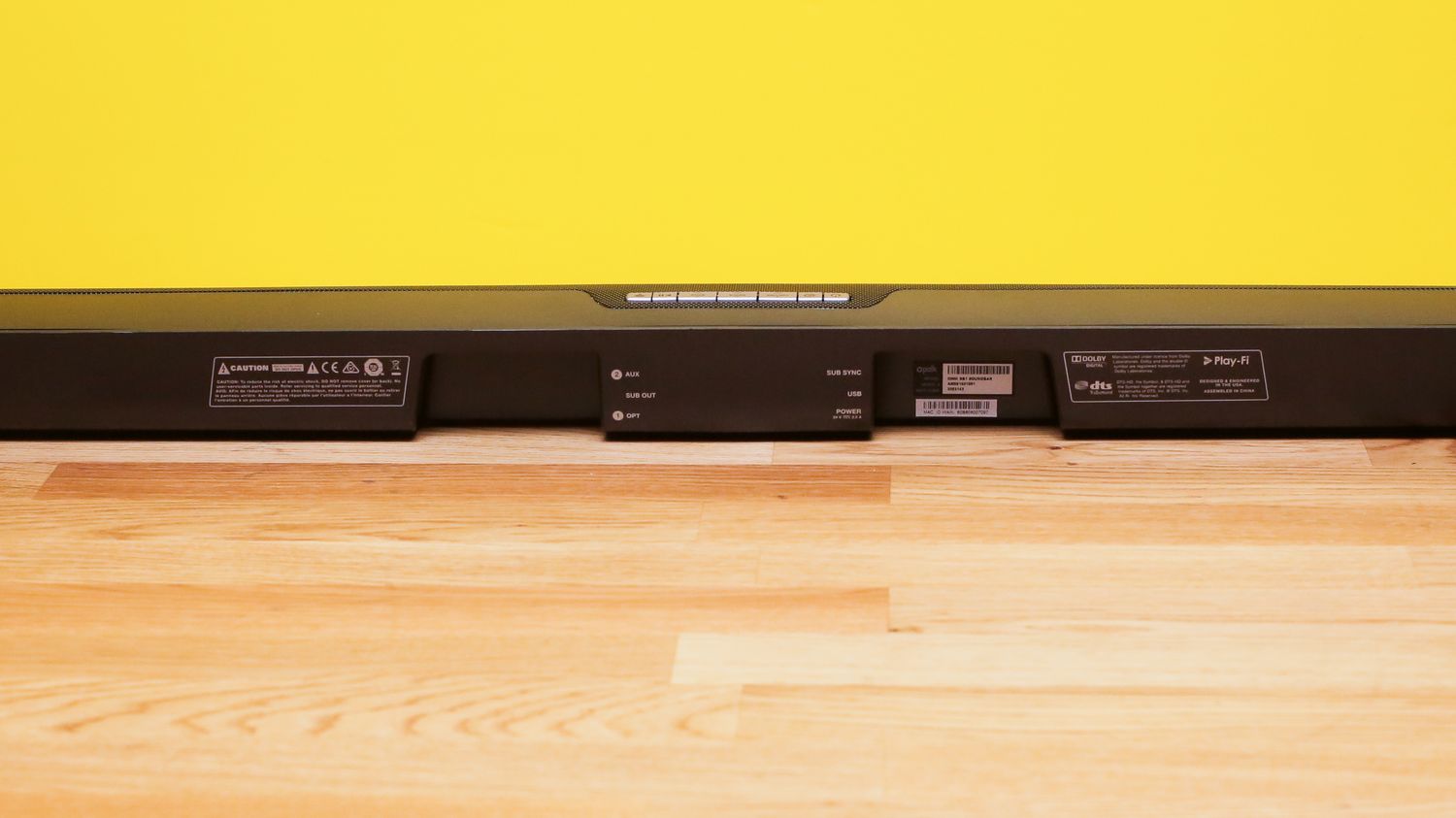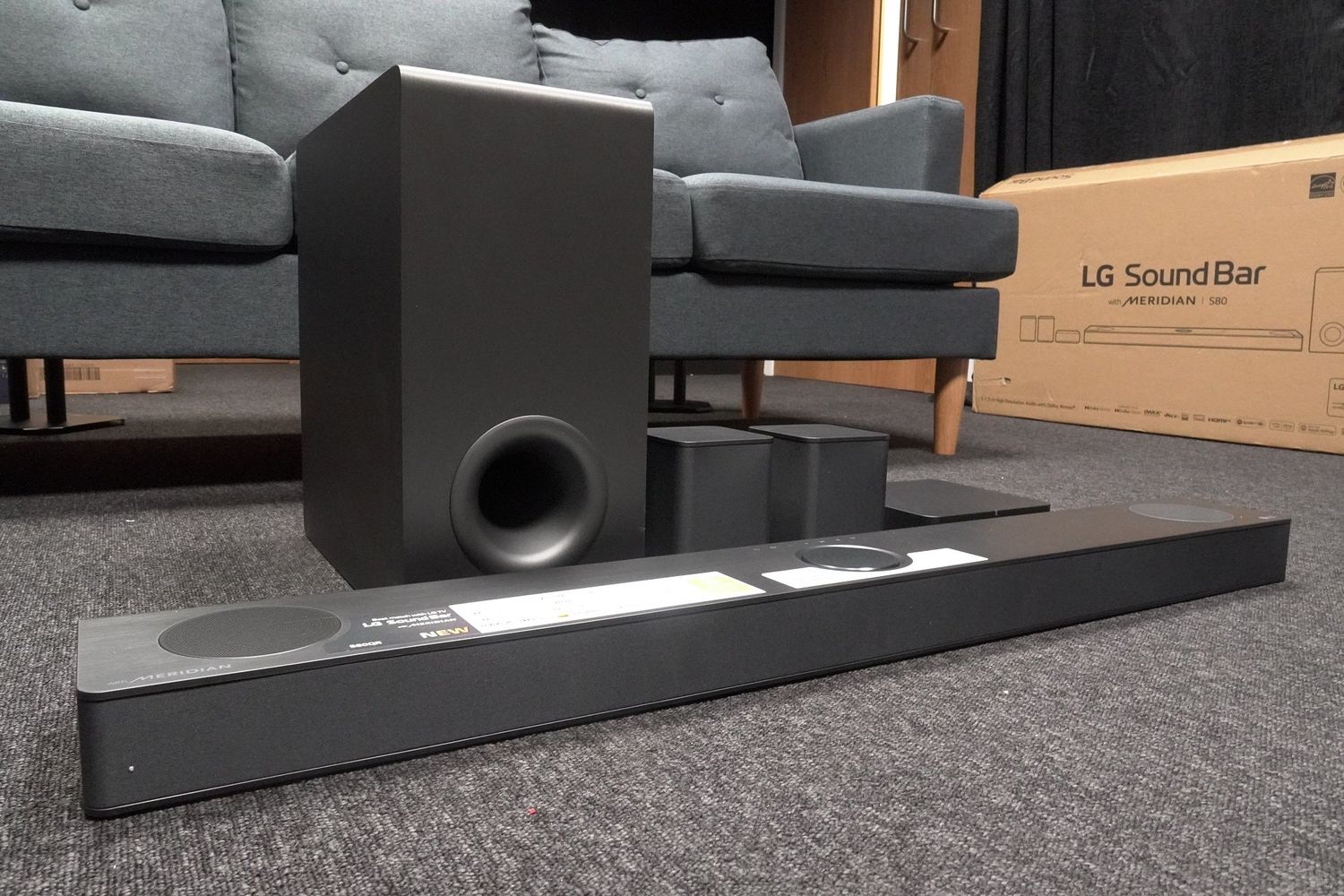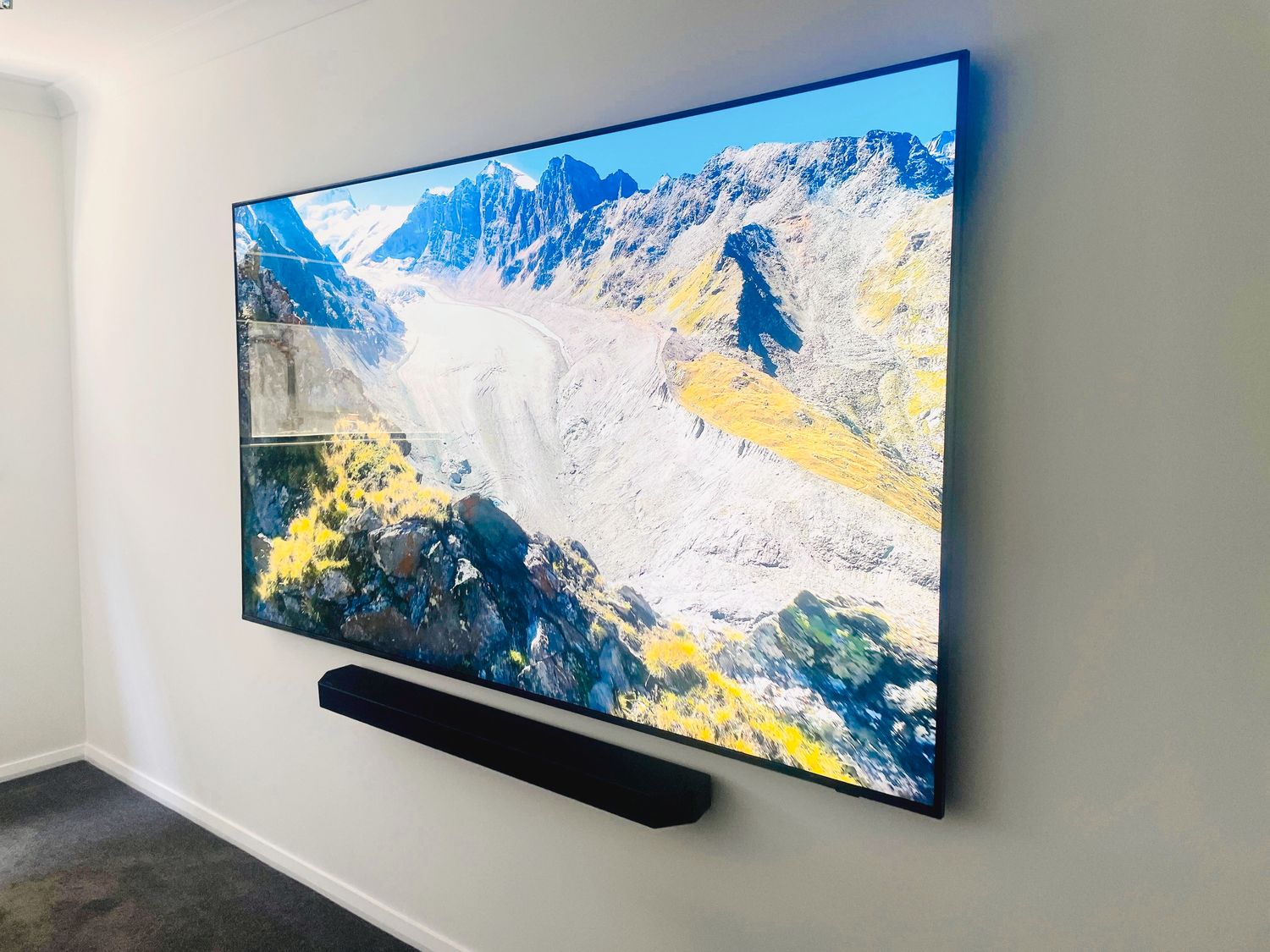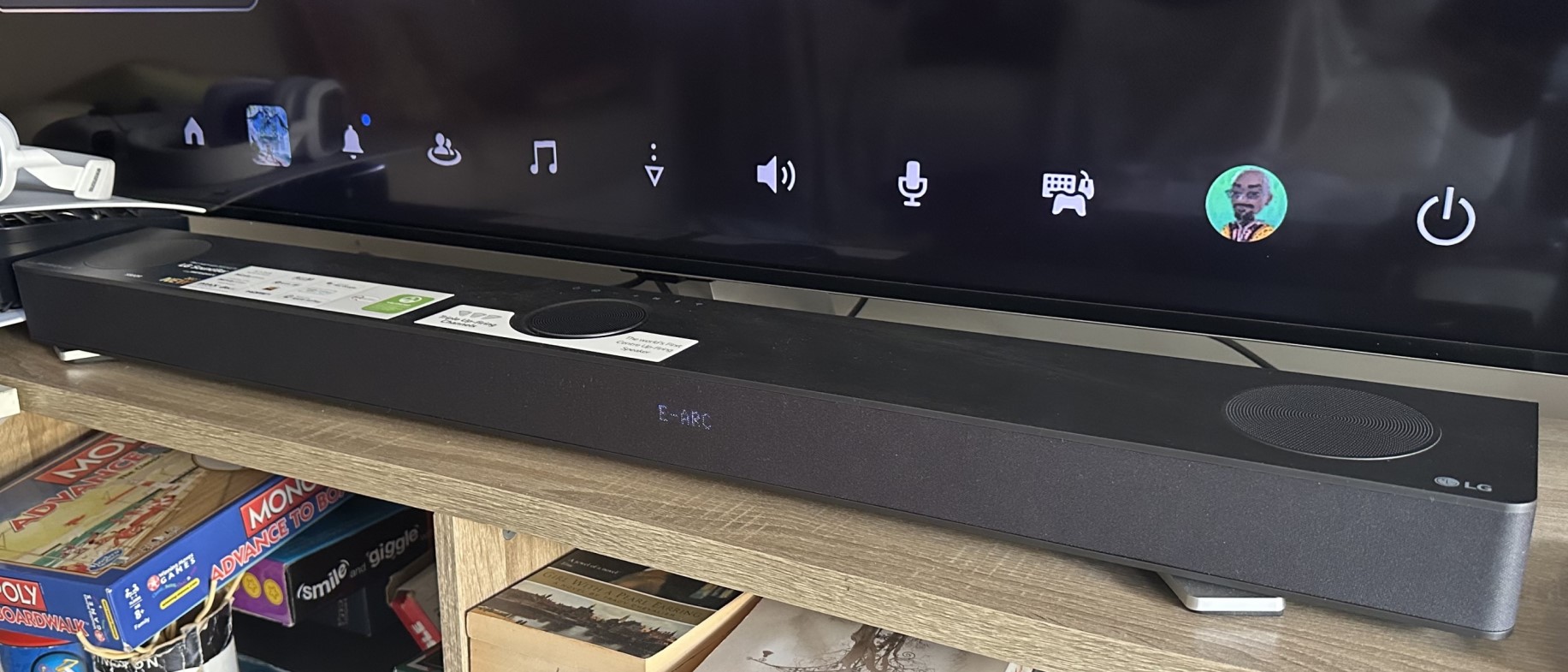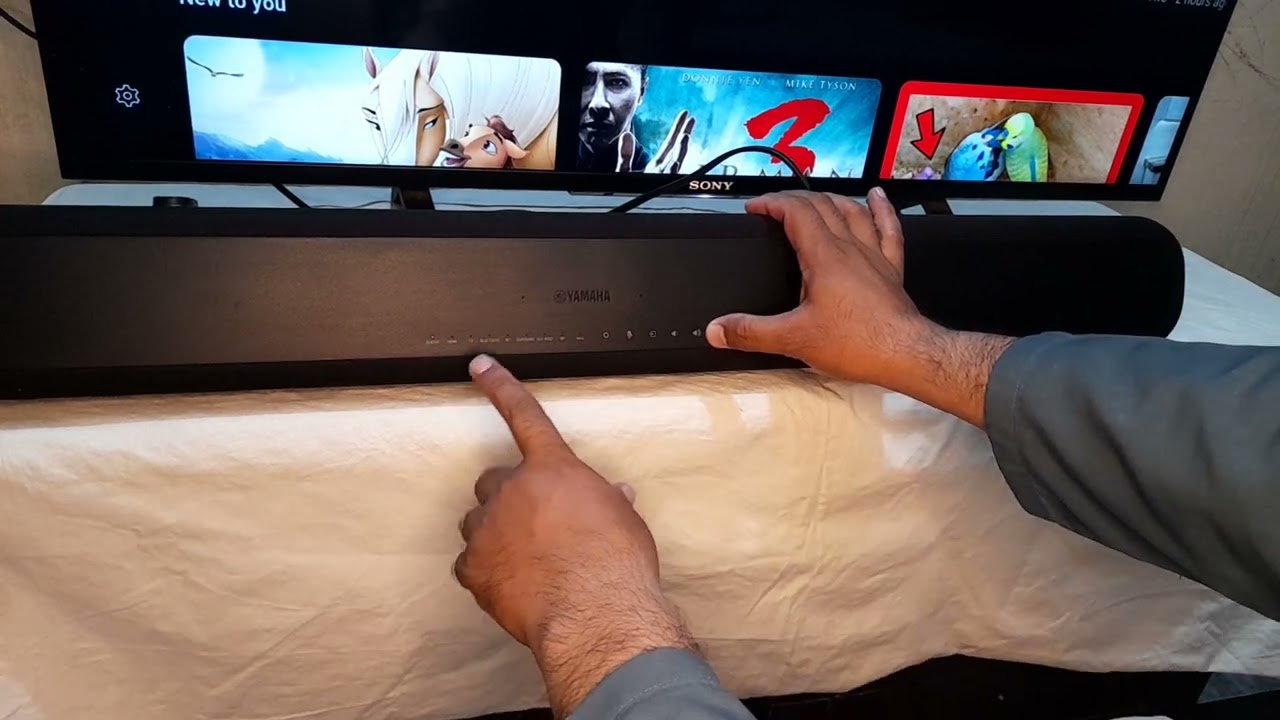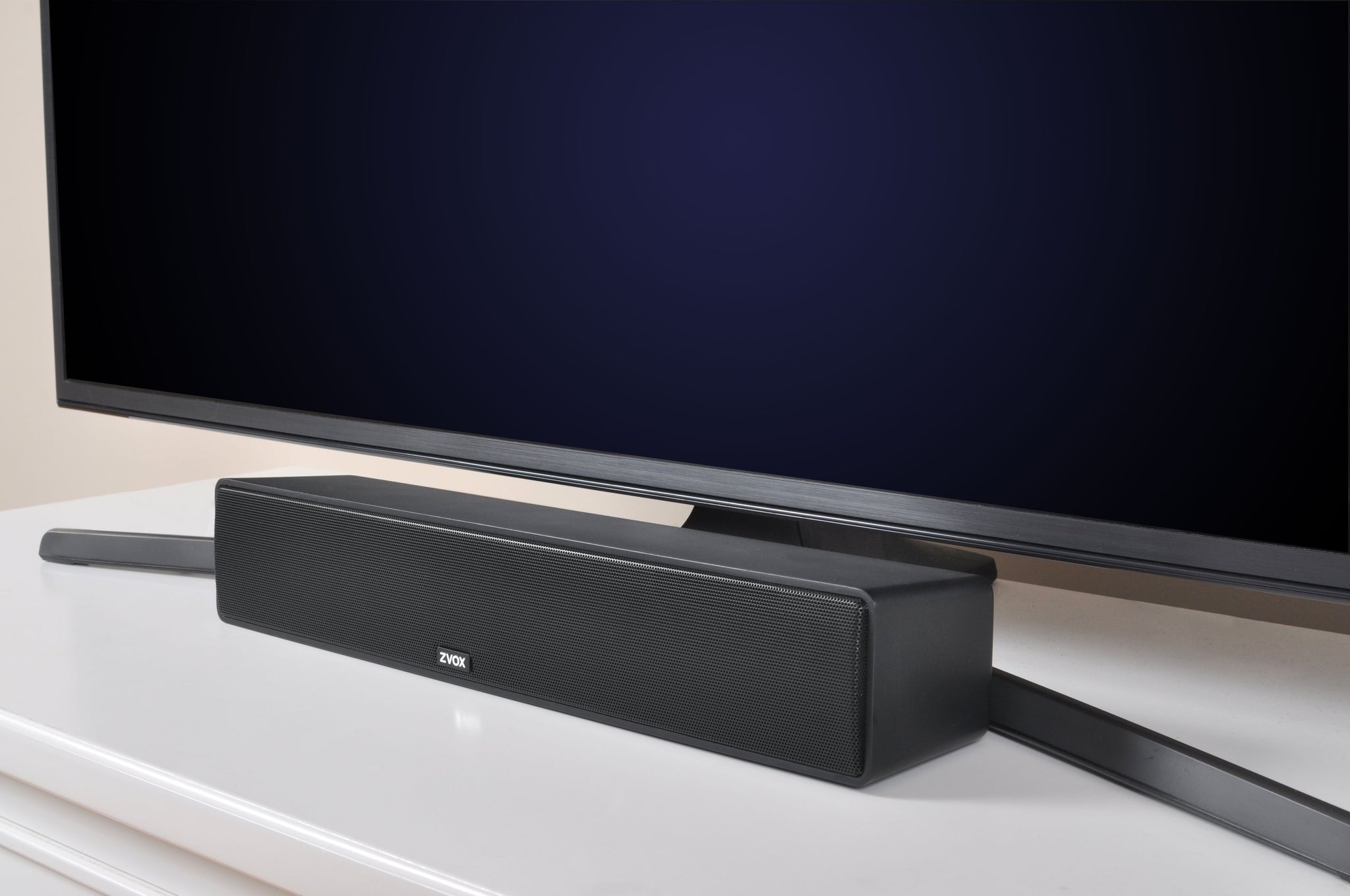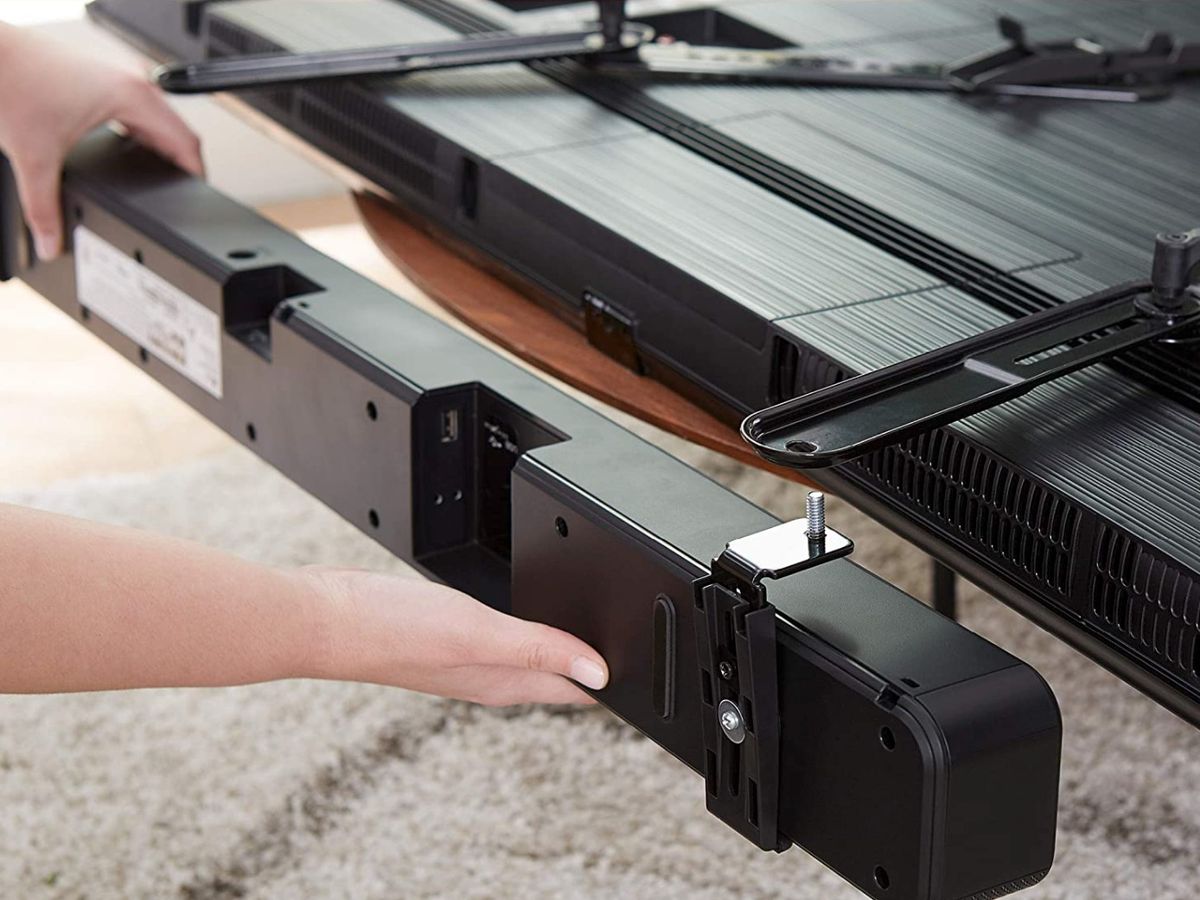Home>Production & Technology>Sound Bar>How To Hide Sound Bar
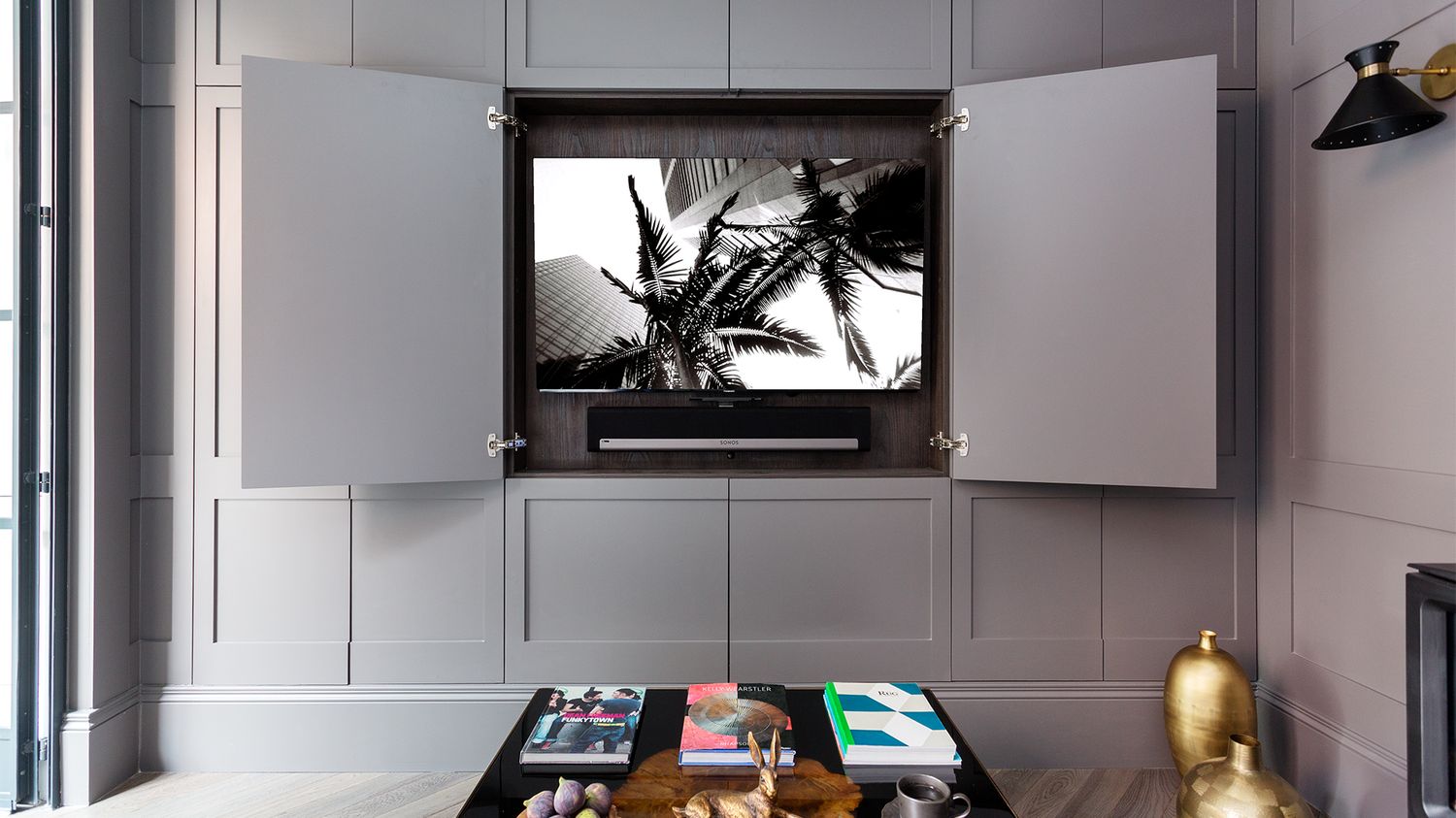

Sound Bar
How To Hide Sound Bar
Modified: January 22, 2024
Learn the best techniques on how to hide your sound bar seamlessly in your living space. Maximize your audio experience without compromising your interior design.
(Many of the links in this article redirect to a specific reviewed product. Your purchase of these products through affiliate links helps to generate commission for AudioLover.com, at no extra cost. Learn more)
Table of Contents
Introduction
Welcome to the world of sound bars, where audio technology meets sleek design and immersive sound experiences. Sound bars have become increasingly popular as a space-saving and affordable alternative to traditional home theater systems. These compact devices deliver high-quality audio, making them the perfect addition to any entertainment setup.
However, while the sound quality is unmatched, some individuals may prefer to hide their sound bars to maintain a clean and minimalist aesthetic in their living spaces. Whether it’s to blend seamlessly with your TV or to minimize visual clutter, there are various clever ways to conceal your sound bar without compromising its audio performance.
In this article, we will explore different strategies for hiding a sound bar, from utilizing TV stands and wall mounting to building custom enclosures and incorporating decorative elements. We will also provide tips on wire management to ensure a clutter-free setup.
So, if you’re ready to achieve a sleek and seamless look for your entertainment area while still enjoying optimal sound quality, let’s dive right in and discover how to hide your sound bar.
Why Hide a Sound Bar?
While sound bars are designed to enhance your audio experience, there are several reasons why you might want to hide them:
- Aesthetic Appeal: Many people prefer a clean and minimalistic look in their living spaces. By hiding the sound bar, you can maintain an uncluttered and sleek appearance.
- Space Saving: Sound bars are specifically designed to be compact and space-saving. However, if you have limited space or prefer a minimalist setup, hiding the sound bar can free up valuable surface area.
- Integration with the TV: If you want your sound bar to seamlessly blend with your television, hiding it can create a cohesive and unified look in your entertainment area.
- Reduced Visual Distraction: Sound bars often come with LED lights or display panels. While these indicators provide useful information, some people find them visually distracting. Hiding the sound bar can eliminate these distractions.
Ultimately, the decision to hide a sound bar comes down to personal preference and the overall aesthetic you want to achieve in your space. Fortunately, there are numerous ways to accomplish this without compromising the audio quality.
Now that we understand the benefits of hiding a sound bar, let’s explore some practical solutions for concealing it in your entertainment area.
Choosing the Right Location
Before you can hide your sound bar, it’s important to select the right location for optimal audio performance. Consider the following factors when deciding where to place your sound bar:
- Distance from the TV: Ideally, the sound bar should be placed close to your TV to ensure synchronization between the audio and visual content. This proximity will create a more immersive viewing experience.
- Height Placement: The sound bar should be positioned at an appropriate height to direct the sound towards your ears. Mounting it too high or too low can impact the quality and clarity of the audio.
- Rear Surroundings: If your sound bar has rear speakers or built-in surround sound, make sure to account for the placement of these components as well. They should be positioned in a way that enhances the surround sound effect without obstructing the sound bar.
- Wall Versus TV Stand: Decide whether you want to mount the sound bar on the wall or place it on a TV stand. The choice will depend on your preferences, available space, and the layout of your entertainment area.
Once you have determined the ideal location for your sound bar, you can proceed with hiding it in a way that complements your overall design scheme. In the following sections, we will explore different methods for concealing your sound bar to achieve a tidy and visually appealing entertainment setup.
Using a TV Stand or Entertainment Center
One of the simplest and most common methods of hiding a sound bar is by utilizing a TV stand or entertainment center. These pieces of furniture are designed to accommodate various audiovisual components, including sound bars.
Here are a few options for concealing your sound bar using a TV stand or entertainment center:
- Open Shelves: If your TV stand or entertainment center has open shelves, you can place the sound bar on one of the lower shelves. This allows for easy access to the sound bar while keeping it discreetly hidden from view.
- Enclosed Cabinets: Some TV stands or entertainment centers come with cabinets or drawers. These enclosed spaces can be used to house the sound bar, keeping it completely concealed when not in use. Make sure that the cabinet has proper ventilation to prevent overheating.
- Cable Management: To further enhance the clean and organized look, consider using cable management solutions. These can help keep the cables neatly tucked away and prevent them from being visible.
When using a TV stand or entertainment center to hide your sound bar, make sure to position it in a way that allows the sound to escape and reach your listening area without any obstructions. Avoid placing objects directly in front of the sound bar that could interfere with the audio performance.
Keep in mind that not all TV stands or entertainment centers are designed to accommodate sound bars. When purchasing a new stand or center, check the specifications or consult the manufacturer to ensure it can accommodate your sound bar.
Using a TV stand or entertainment center provides a convenient and simple solution for hiding your sound bar while maintaining easy access and optimal audio performance. However, if you prefer a more streamlined and minimalistic look, you may consider wall mounting your sound bar, which we will explore in the next section.
Mounting the Sound Bar on the Wall
If you want to achieve a sleek and minimalist look, mounting your sound bar on the wall is an excellent option. This not only provides a clean and uncluttered aesthetic but also allows for optimal sound dispersion throughout the room.
Follow these steps to successfully mount your sound bar on the wall:
- Choose the Right Wall Mount: Select a wall mount that is compatible with your sound bar and TV. Ensure that it has the necessary weight capacity and provides the flexibility to adjust the angle and position of the sound bar.
- Locate the Studs: Use a stud finder to locate the studs in the wall. Mounting the sound bar on a stud provides a secure and stable installation. Mark the positions of the studs with a pencil.
- Attach the Wall Mount: Align the wall mount with the marked positions and use a level to ensure it is straight. Drill pilot holes and secure the wall mount into the studs using screws.
- Attach the Sound Bar: Depending on the type of wall mount, you may need to use mounting brackets or screws to secure the sound bar. Follow the instructions provided by the manufacturer for proper installation.
- Hide the Cables: To maintain a clean and tidy appearance, hide the cables by running them through the wall or using cable management solutions. This will prevent unsightly wires from distracting the eye.
Mounting your sound bar on the wall not only provides a sleek and modern look but also ensures that the sound is projected at the optimal height and angle for an immersive audio experience. However, it’s essential to consider the placement and potential obstructions, such as furniture or decor, that could interfere with the sound dispersion. Adjust the positioning and angling of the sound bar as needed to achieve the best audio quality.
Wall mounting is a popular choice for those who want to minimize visual distractions and create a streamlined entertainment setup. However, if you’re looking for a more customized solution that seamlessly integrates the sound bar into your room’s design, building a custom enclosure may be the perfect option, which we will explore in the next section.
Building a Custom Sound Bar Enclosure
If you are a DIY enthusiast or want a truly customized solution, building a custom sound bar enclosure can be a rewarding project. This allows you to integrate the sound bar seamlessly into your room’s design while ensuring optimal sound performance.
Here are the steps to build a custom sound bar enclosure:
- Measurements and Design: Begin by measuring the dimensions of your sound bar. Take into account any additional components, such as subwoofers or rear speakers. Use these measurements to determine the size and shape of the enclosure.
- Choose the Materials: Select a suitable material for your enclosure, such as wood or medium-density fiberboard (MDF). Ensure that the chosen material is sturdy and can provide adequate support for the sound bar.
- Construct the Enclosure: Cut the material according to your measurements and assemble the enclosure using nails, screws, or wood glue. Create openings or vents as needed for proper sound dispersion.
- Finish and Paint: Sand down the enclosure to achieve a smooth finish. Apply a primer and paint of your choice to match your room’s decor. Consider using acoustically transparent fabric to cover the front of the enclosure for better sound transmission.
- Mounting and Wiring: Install brackets or hooks inside the enclosure to securely mount the sound bar. Ensure that there is enough space for the cables and connect them to the appropriate ports on the sound bar.
Building a custom sound bar enclosure allows you to not only hide the sound bar but also incorporate it seamlessly into your room’s design and décor. You have the freedom to choose materials, finishes, and colors that match your personal style.
Remember to consider ventilation and sound dispersion when constructing the enclosure. Proper airflow is crucial to prevent overheating, which could potentially damage the sound bar. Also, ensure that the sound can escape the enclosure without any obstructions, so the audio quality remains unaltered.
If DIY projects aren’t your forte or you prefer a simpler solution, there are other creative ways to hide your sound bar using decorative elements, as we will explore in the next section.
Camouflaging with Decorative Elements
If you want to hide your sound bar while adding a touch of style to your entertainment area, camouflaging it with decorative elements is a creative and aesthetically pleasing option. By incorporating decor and design elements, you can seamlessly blend the sound bar into your room’s overall look and feel.
Here are a few ideas for camouflaging your sound bar with decorative elements:
- Artwork or Picture Frames: Hang artwork or picture frames around the sound bar to create a gallery wall effect. This will draw attention away from the sound bar and make it appear as a part of the art display.
- Decorative Panels: Install decorative panels or screens that can be adjusted to conceal the sound bar when it’s not in use. These panels can be made using various materials such as fabric, wood, or metal, and can be designed to match your room’s aesthetic.
- Floating Shelves: Place floating shelves above or below the sound bar and decorate them with books, plants, or other decor items. This will create a visually interesting display that disguises the sound bar.
- Custom Speaker Grilles: Design and create custom speaker grilles that match your room’s style. These grilles can be made with fabric, perforated metal, or decorative patterns, allowing the sound to pass through while adding a unique touch to your space.
When camouflaging your sound bar with decorative elements, make sure to consider the sound dispersion. Avoid covering the front of the sound bar or obstructing the speakers to maintain optimal audio quality.
Remember, the goal is to incorporate the sound bar into your room’s design seamlessly, making it appear as a deliberate part of the overall decor rather than an obtrusive element.
Now that you have some creative ideas for disguising your sound bar, let’s move on to addressing another important aspect of maintaining a clean and organized setup: wire management techniques.
Wire Management Techniques
One of the key aspects of achieving a clean and organized entertainment setup is managing the wires and cables associated with your sound bar. Messy and tangled cords can detract from the aesthetic appeal of your space. Fortunately, there are several wire management techniques you can employ to keep your setup neat and visually pleasing.
Here are some wire management techniques to consider:
- Cable Concealers: Use cable concealers or wire channels to hide the wires along the wall or baseboard. These plastic or rubber channels can be easily attached and painted to match the surrounding area, creating a seamless look.
- Cable Ties and Clips: Bundle and secure the wires using cable ties or clips. This helps prevent them from tangling and keeps them organized and out of sight. You can also use adhesive hooks or clips to hold the wires along the back of furniture or behind the wall-mounted sound bar.
- In-Wall Wire Routing: If you prefer a completely clean and hidden wire management solution, consider routing the wires through the walls. This may require professional assistance but can result in a truly seamless and clutter-free setup.
- Wireless Connectivity: Another option for reducing wire clutter is to use wireless connectivity if your sound bar supports it. This eliminates the need for physical connections between the sound bar and other devices, such as the TV or streaming devices.
By implementing these wire management techniques, you can greatly improve the overall appearance of your entertainment area. A tidy and well-managed cable setup not only enhances the aesthetics but also makes it easier to clean and maintain your equipment.
Remember to plan your wire management strategy before installing your sound bar or any other audiovisual components. Taking the time to organize the wires and cables from the start will save you the hassle of untangling and reorganizing them later.
Now that we’ve covered various methods for hiding and organizing your sound bar, let’s recap the key takeaways.
Conclusion
Hiding your sound bar can be a strategic and aesthetically pleasing choice, allowing you to maintain a clean and minimalist look in your entertainment area. Whether you prefer to use a TV stand, wall mount, custom enclosure, decorative elements, or a combination of techniques, there are numerous options available to seamlessly integrate your sound bar into your room’s design while maintaining optimal audio performance.
By choosing the right location and considering factors such as distance from the TV, height placement, and rear surroundings, you can ensure that your sound bar is positioned for the best sound dispersion. Utilizing a TV stand or entertainment center provides a simple solution for hiding the sound bar, while wall mounting allows for a sleek and streamlined look. For those with a DIY spirit, building a custom sound bar enclosure adds a unique and personalized touch to your setup.
Camouflaging your sound bar with decorative elements not only hides it but also adds a stylish flair to your space. By incorporating artwork, panels, or shelves, you can make the sound bar seamlessly blend with your room’s decor. Additionally, properly managing the wires and cables associated with your sound bar using cable concealers, ties, or in-wall routing helps create a clean and organized setup.
Consider your personal preferences, available space, and design aesthetic when deciding which methods to use for hiding and integrating your sound bar. Remember to prioritize audio performance and make sure the sound can escape unobstructed for the best listening experience.
With these strategies in mind, you can achieve a visually appealing and immersive entertainment area, where your sound bar remains hidden while delivering exceptional audio quality. So, embrace the possibilities and let your creativity shine as you transform your space into a haven of sleek design and cinematic sound.

